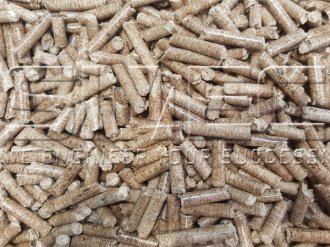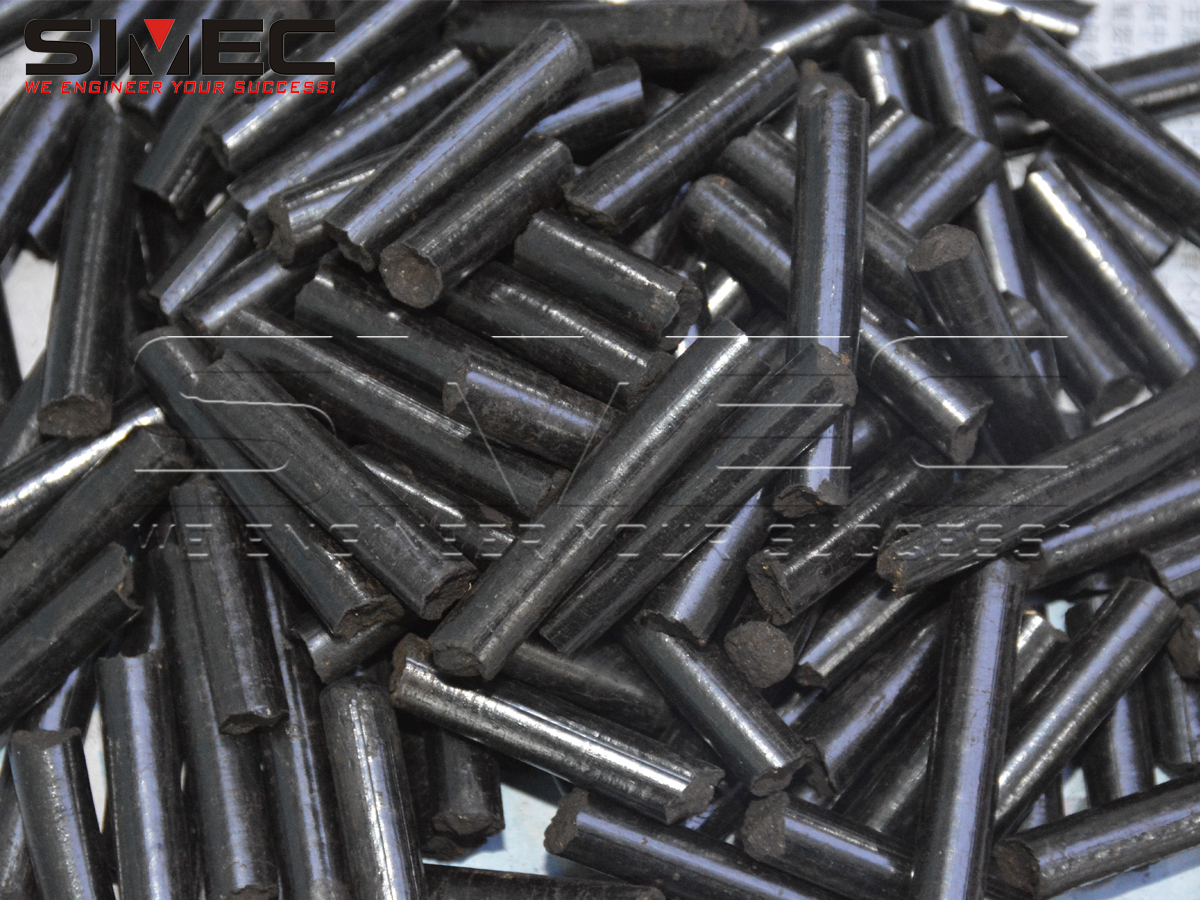Advantages of Torrefied Black Pellets
In the field of biomass energy, torrefied pellets have many significant advantages over ordinary biomass pellets. We have compiled some data and summarized the advantages of torrefied pellets:
1. Higher calorific value and energy density
Biomass pellets such as wood and straw generally have a net calorific value of 15-19 MJ/kg. After torrefaction, the net calorific value can be increased to 18-22 MJ/kg, an increase of 15-25%. Taking wood pellets as an example, the net calorific value before torrefaction is about 17 MJ/kg, and it can reach 20 MJ/kg after torrefaction; the net calorific value of torrefied straw pellets is increased from the original 16 MJ/kg to 19 MJ/kg. In terms of energy density, since torrefaction increases the stacking density of pellets, the overall energy density is increased by about 20-30%. This means that under the same volume, torrefied pellets can store and transport more energy, effectively reducing the transportation cost per unit of energy.
2. Lower moisture content and water absorption resistance
The moisture content of ordinary biomass pellets is usually in the range of 8-15%, and it is very easy to absorb moisture during storage, and the moisture content can increase to more than 20%. The torrefaction process can force dehydration and reduce the moisture content to less than 5%. At the same time, the lignin structure is reorganized after torrefaction, which significantly enhances the water absorption resistance of the pellets and reduces the moisture absorption rate by more than 50%. This feature reduces the risk of mildew caused by moisture during storage, reduces energy loss, and avoids the cost of secondary drying.
1. Higher calorific value and energy density
Biomass pellets such as wood and straw generally have a net calorific value of 15-19 MJ/kg. After torrefaction, the net calorific value can be increased to 18-22 MJ/kg, an increase of 15-25%. Taking wood pellets as an example, the net calorific value before torrefaction is about 17 MJ/kg, and it can reach 20 MJ/kg after torrefaction; the net calorific value of torrefied straw pellets is increased from the original 16 MJ/kg to 19 MJ/kg. In terms of energy density, since torrefaction increases the stacking density of pellets, the overall energy density is increased by about 20-30%. This means that under the same volume, torrefied pellets can store and transport more energy, effectively reducing the transportation cost per unit of energy.
2. Lower moisture content and water absorption resistance
The moisture content of ordinary biomass pellets is usually in the range of 8-15%, and it is very easy to absorb moisture during storage, and the moisture content can increase to more than 20%. The torrefaction process can force dehydration and reduce the moisture content to less than 5%. At the same time, the lignin structure is reorganized after torrefaction, which significantly enhances the water absorption resistance of the pellets and reduces the moisture absorption rate by more than 50%. This feature reduces the risk of mildew caused by moisture during storage, reduces energy loss, and avoids the cost of secondary drying.


Optimized ratio of volatile matter to fixed carbon: biomass pellets have a volatile matter ratio of 60-70%, which is too fast to burn and easily produces black smoke, and a fixed carbon ratio of 15-20%. After torrefaction, the volatile matter drops to 50-60%, and the fixed carbon rises to 25-30%, making the combustion process more stable and reducing incomplete combustion losses by 5-10%.
Reduced risk of coking and corrosion: Torrefaction can remove some volatile alkali metals, such as potassium and sodium. The alkali metal content in the ash is reduced by 20-30%, and the ash melting point is increased by 50-100℃, which greatly reduces boiler slagging and pipeline corrosion, extends the service life of the equipment, and reduces maintenance costs.
4. Higher bulk density
The bulk density of biomass pellets is approximately 600-700 kg/m³. After torrefaction, the pellet structure becomes denser and the bulk density is increased to 700-800 kg/m³. The increase in bulk density increases the energy per unit volume of transportation by about 15%, thereby reducing the transportation cost by 10-15%, which is particularly advantageous in long-distance transportation.
5. Better grindability
The grindability of torrefied pellets is significantly better than that of ordinary biomass pellets, and this is supported by data: the thermally treated biomass grindability index (TTBGI) of ordinary biomass pellets is typically ≤20, while the TTBGI of torrefied pellets can rise to over 50, some approaching the level of wood charcoal. This is because torrefaction thermally decomposes hemicellulose and cellulose, converting the fibrous structure into a brittle carbon material. The removal of moisture and volatiles creates pores that make the pellets more fragile. In industry, this characteristic can increase mill capacity by 15-20%, directly reducing electricity consumption in the grinding process, reducing equipment wear and energy waste. It has significant advantages in scenarios such as biomass and coal co-firing, and gasification pulverization.
6. More compatible with coal
The net calorific value of torrefied pellets ranges from 18 to 22 MJ/kg, which is close to lignite (20 to 25 MJ/kg), and its combustion characteristics such as ignition point and combustion rate are more compatible with coal. In existing coal-fired power plants, torrefied black pellets can directly replace 30 to 50% of coal without major equipment modifications, which provides a broader space for its wide application in the energy field and also provides a feasible solution for achieving clean coal substitution.
© Copyright of articles and pictures on this site belongs to SIMEC. Any company, media, website or individual are not allowed to reprint, reproduce, repost, modify or use in other ways without permission. Otherwise SIMEC will have the right to pursue legal responsibilities.